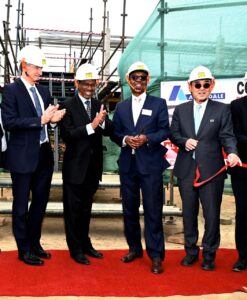
The recent launch of a R1.1-billion automotive components manufacturing facility at Dube TradePort’s TradeZone 2 marks a significant milestone for KwaZulu-Natal’s economy. This joint venture between Toyota Tsusho Africa (Pty) Ltd (TTAF) and Ogihara Thailand Corporation Ltd (OTC) is not just a symbol of foreign investment but a clear indication that the province’s automotive sector is accelerating towards a brighter future.
Located on a 32,000 m² site, Ogihara SA will manufacture pressed steel components for Toyota South Africa Manufacturing. The facility, relocated from Thailand, is set to commence operations in June 2025. This is the single largest investment Dube TradePort has secured since its inception, underscoring the strategic importance of Special Economic Zones (SEZs) in the region’s economic development.
Speaking at the launch, MEC for Economic Development, Tourism, and Environmental Affairs (EDTEA), Rev. Musa Zondi, emphasized that the facility is part of a broader strategy to boost the local automotive industry. “This launch is indicative of continuing momentum in the KwaZulu-Natal economy,” he said. With plans for a new Durban Automotive Supplier Park (ASP) on the horizon, the sector is poised for even more growth.
Andrew Kirby, CEO of Toyota South Africa Motors, highlighted the importance of localizing production through partnerships like Ogihara SA. “This venture marks a significant step towards our Local Value Addition (LVA) improvement strategy,” Kirby stated. He noted that this venture would create new job opportunities while enhancing the quality and competitiveness of the local automotive industry.
With the potential to create 300 jobs within five years and support local steel production, Ogihara SA’s investment is a critical step in KwaZulu-Natal’s journey towards becoming a leading automotive hub in South Africa. As the industry aims to increase domestic vehicle production to 1.4 million units by 2035, this facility will play a crucial role in achieving that target.
